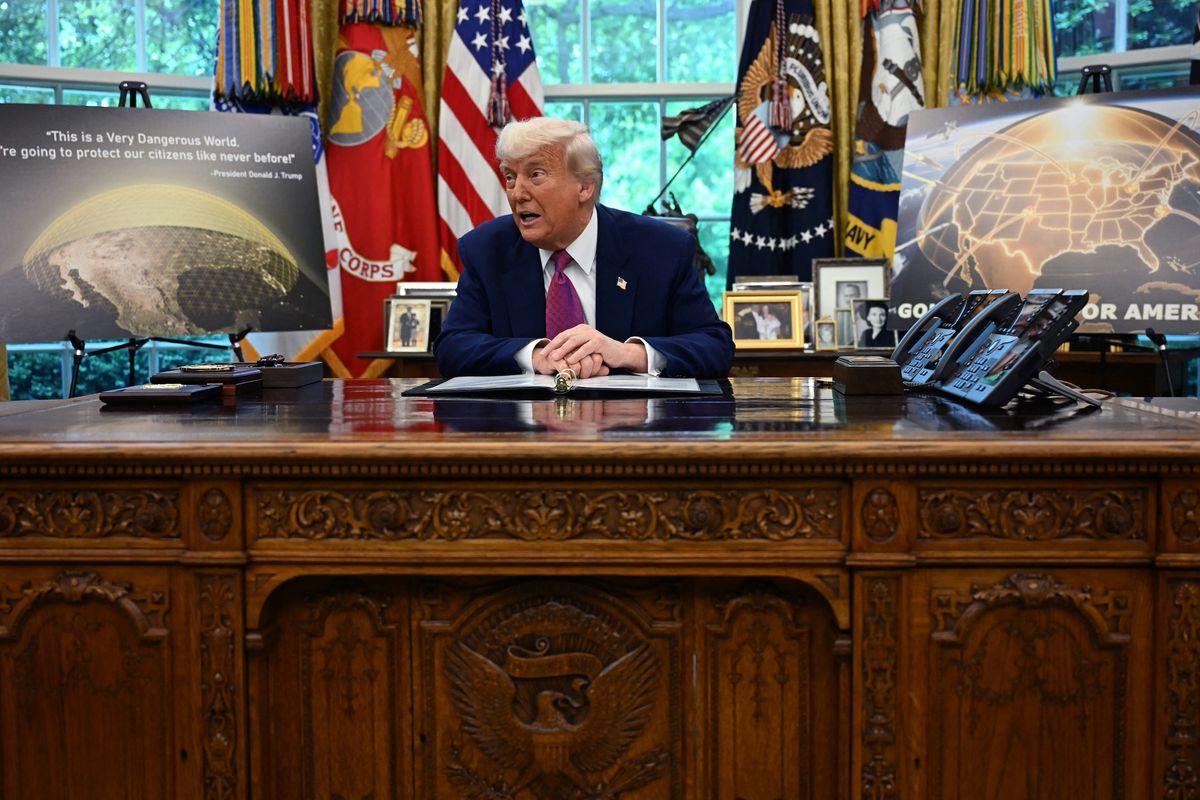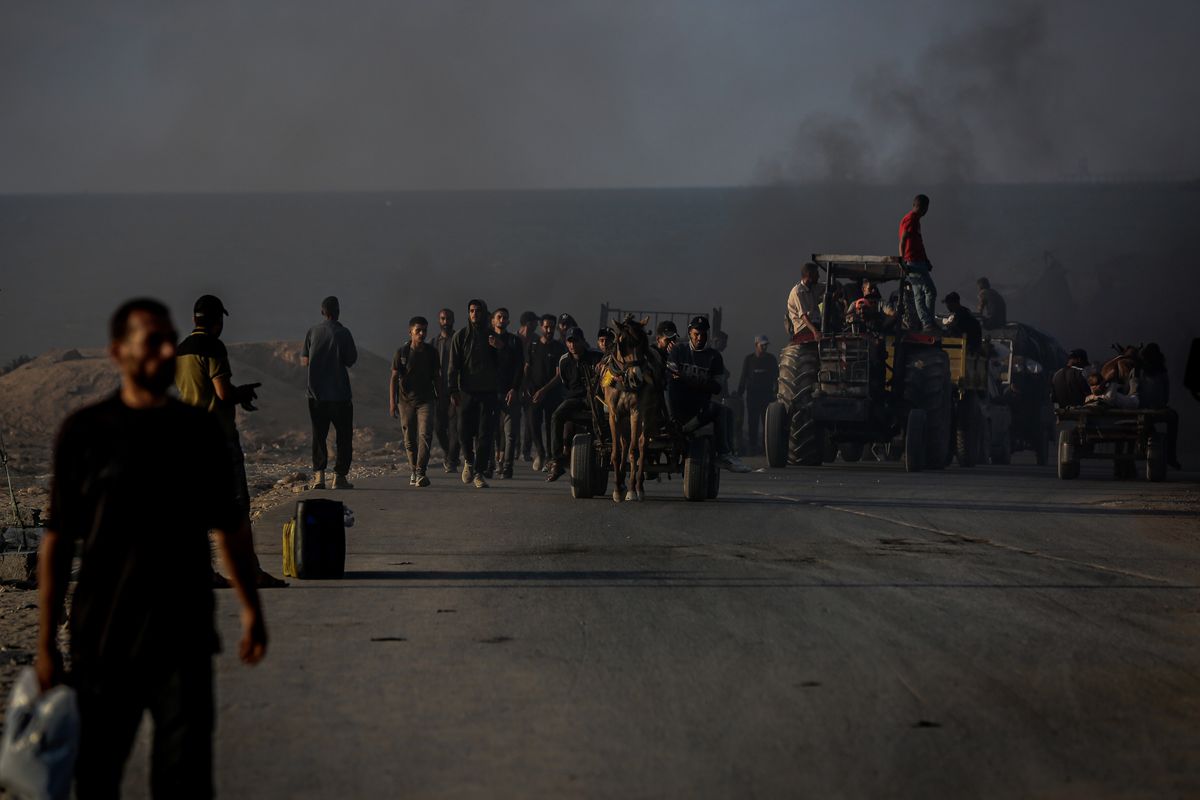OPINION — Last Friday, the Associated Press and Reuters both reported that an un-named senior administration official said that the U.S. told Moscow that President Trump now favors a summit meeting of the five permanent members of the United Nations Security Council to set up a three-way U.S., China, Russia discussion to head off what appears to be a growing nuclear arms race.
On Saturday, at the end of his press conference on the Coronavirus issue, Trump was asked about nuclear arms control discussions with Russia and other nuclear armed countries and said, “We will be discussing that in New York.”
He gave no time frame, but it could be that he meant it will be discussed when leaders are in New York City in September at the annual General Assembly meeting.
With the media focused on the Coronavirus threat, the Democratic primaries, and possible Afghan War settlement, very little attention has been paid to the possibility that there may at last be new nuclear arms control talks.
Russian President Vladimir Putin has been publicly pushing for such discussions, particularly aimed at extending the 2010 New START treaty which limits Russian and U.S. strategic nuclear warheads and their delivery systems and expires on February 5, 2021.
Trump in the past has called not only for a broader negotiation to include China and perhaps the United Kingdom and France, but he has also insisted that any future agreement must also deal with non-strategic nuclear arms. Putin also has an interest in including China and intermediate-range nuclear weapons into the discussion since Beijing has them near the Sino-Russian border.
Last Saturday, Trump brought the US dollar into the conversation, saying, “We are spending over $20 billion on nuclear and on super-speed [meaning hypersonic] missiles and other things.” It is actually much more.
Trump added, “They all want to discuss arms control…that includes China, and that includes Russia and it is smart of them to want to do it and it is smart of us to want to do it and we will be discussing that in New York.”
In The Cipher Brief last December 24, I wrote that any talks about strategic deterrence should also be dealing with the future of cyber strategic warfare. That’s because unlike nuclear weapons, strategic cyber attacks won’t necessarily kill thousands of people while making cities and towns uninhabitable for decades. Cyber weaponry also does not potentially carry long-lasting, deadly, radioactive fallout hundreds of miles from the immediate target area.
These are reasons why nuclear weapons have not been used for 75 years, although tens of thousands of them have been built and thousands remain deployed. They remain useful as diplomatic tools and provide domestic political weapons for politicians in countries that have them or want them, but they are unpredictable for actual warfare.
Meanwhile, smaller cyber attacks have already been used between nations and more, even major strategic attacks, are being planned by nations that have or do not have nuclear weapons.
Despite their lack of use, there is a nuclear arms competition underway among three major powers.
Here in the U.S., Congress is studying the Trump administration’s fiscal 2021 budget request for a record $46 billion to pay for this country’s nuclear weapons program for next year. Adm. Charles A. Richard, Commander of United States Strategic Command (STRATCOM) last month testified before the Senate and House Armed Services and described details of the programs.
Programs to be funded by the Defense and Energy Department budgets include the new B-61-12 thermonuclear gravity bomb, and W-80 warhead for the new Long-Range Stand Off (LRSO) nuclear-capable cruise missile; the new W-76-2 low-yield warhead for the Navy’s sub-launched D-5 strategic missile. There is also money for the development of a submarine-launched nuclear cruise missile and to start design of the W-93 warhead to replace two different powerful warheads on current land-based and submarine-launched intercontinental ballistic missiles (ICBMs).
In addition, Adm. Richard described progress on all three U.S. strategic nuclear delivery systems – the Columbia strategic submarine at $6.2 billion each (12 planned); a new stealth, B-21 bomber at $656 million each (100 planned); and development of a new, land-based ICBM whose future price tag for development and building is put at more than $85 billion.
In addition, Wright described the need to develop manufacturing capability for yearly production by 2030 of 80 so-called nuclear “pits,” the plutonium triggers used to detonate thermonuclear warheads and bombs. The estimated cost for the build out of required facilities at Los Alamos National Laboratory in New Mexico, and Savannah River Site in South Carolina is currently estimated at $9 billion.
In short, the U.S. is planning to spend a now estimated $1.4 trillion to maintain its nuclear weapons deterrent at roughly current levels through 2050. The new Columbia strategic submarine will last through 2080, according to Adm. Richard.
Russia also has an “aggressive and robust military and nuclear modernization campaign across its strategic triad and dual-use systems,” Adm. Richard told a House Armed Services subcommittee last Thursday.
He said Russia is updating its Bear strategic bombers and long-range, air-launched cruise missiles; building and deploying a new class of strategic submarines and replacing its silo-based and mobile ICBMs with new systems that could carry even more warheads.
In addition, Adm. Richard said they are deploying a new nuclear-capable hypersonic glide vehicle plus a hypersonic anti-ship missile, a nuclear-capable Poseidon unmanned underwater vehicle, the Kalibr land-attack cruise missile, Kinzhal air-launched ballistic missile, and the Skyfall nuclear-powered intercontinental cruise missile.
China, which has maintained some 300 strategic nuclear ICBMs over the years, will “likely double the size of their nuclear stockpile by the end of the decade,” Adm. Richard said. During the October 2019, 70th Anniversary Parade celebrating Communist Party rule, “ PLA (People’s Liberation Army, i.e. Chinese armed forces) unveiled new strategic nuclear systems, including the H-6N BADGER bomber, DF-41 intercontinental ballistic missile, DF-17 medium-range ballistic missile, and improved submarine-launched ballistic missiles,” Adm. Richard said.
The Cold War notion was that for deterrence to work, the U.S. and Russia had to have equal nuclear forces, thus the push for New START treaty limitations on strategic warheads and delivery systems.
That does not apply to what’s going on in the non-strategic nuclear arena, though. For example, although Russia’s new hypersonic missiles are nuclear capable, the planned U.S. system is to be conventionally armed, not nuclear, according to Adm. Richard.
As he put it before the Senate Armed Services Committee on February 13, 2020, “Our nuclear forces must include a sufficient range of capabilities such that Russia never mistakenly perceives any advantage from using nuclear weapons, at any threshold of violence.” That reflects the old approach, nuclear to be used in response to nuclear use.
But the Trump 2018 Nuclear Posture Review had another twist to it.
Adm. Richard told the Armed Services Committees, “Our strategic capabilities are designed to deter a strategic attack on the United States which can be nuclear, but I think it wisely acknowledged the fact that it now may be possible to have a strategic attack against our vital interest that is non-nuclear, particularly in space and cyber.”
In short, Adm. Richard told both committees that U.S. nuclear weapons could be used in “extreme circumstances” in a “first or second” strike as a response to an enemy’s strategic attack, whether nuclear, in space or delivered via cyber.
I would make the controversial prediction that the least likely strategic attack on U.S. interests today or in the future would be one with nuclear weapons. The more likely would be an attack delivered via cyber against targets on land and/or in space.
Read more expert-driven national security insights, opinions and analysis in The Cipher Brief












